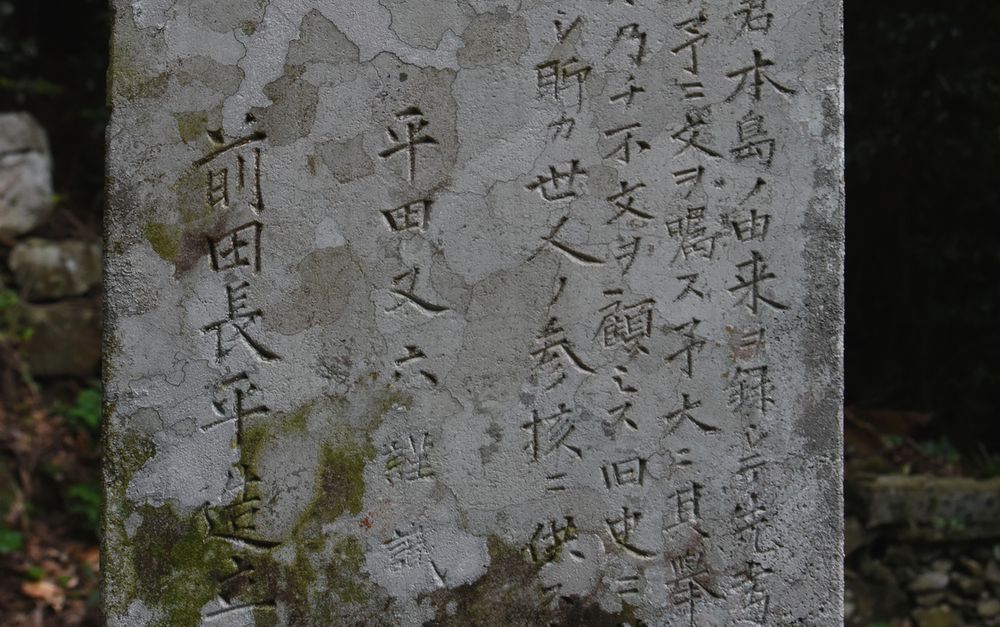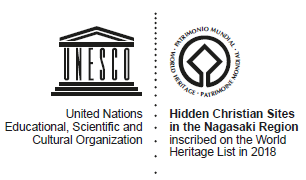Component
 Villages on Kashiragashima Island
Villages on Kashiragashima Island
(Ⅲ) Hidden Christians’ endeavours to continue and spread their religious faith

 (Ⅰ) Beginning of the absence of missionaries and hiding of Christians
(Ⅱ) Hidden Christians' endeavours to continue their religious faith
(Ⅲ) Hidden Christians' endeavours to maintain their religious communities
(Ⅳ) The transitional phase triggered by contact with missionaries, leading to the end of Hidden Christians' hiding
(Ⅰ) Beginning of the absence of missionaries and hiding of Christians
(Ⅱ) Hidden Christians' endeavours to continue their religious faith
(Ⅲ) Hidden Christians' endeavours to maintain their religious communities
(Ⅳ) The transitional phase triggered by contact with missionaries, leading to the end of Hidden Christians' hiding












 |
Hidden Christians maintained their religious communities after they migrated to Kashiragashima Island, which once had been used for sick people. |
-
Animation Video (Villages on Kashiragashima Island)
The Villages on Kashiragashima Island are one of the five components demonstrating to which locations the Hidden Christians migrated to maintain their religious communities. In the 19th century, some of the Hidden Christians from Sotome settled in Kashiragashima Island, which had been used for sick people and therefore avoided by other communities. The Hidden Christian migrants secretly maintained their religious communities while living under the guidance of a Buddhist man to camouflage their inner faith. Following the ‘Discovery of Hidden Christians’ at Oura Cathedral, the Hidden Christian migrants rejoined the Catholic Church and built a new church near their religious leader’s house, putting an end to their hiding.
Basic information



| Designation title as cultural assets | Location | Designation category | Year of designation |
|---|---|---|---|
| Stone-built Village Landscape of Sakiura in Shinkamigoto | Shinkamigoto Town, Minamimatsuura District, Nagasaki Prefecture | Important Cultural Landscape selected by the national government | 2012 |
| Kashiragashima Church | Shinkamigoto Town, Minamimatsuura District, Nagasaki Prefecture | Important Cultural Property designated by the national government | Firstly in 2001 and additionally in 2003. |
Access
>Kashiragashima Church(”Hidden Christian Sites in the Nagasaki Region” Information Centre)
※A new window opens.









































 Remains of Hara Castle
Remains of Hara Castle Kasuga Village and Sacred Places in Hirado
Kasuga Village and Sacred Places in Hirado Kasuga Village and Sacred Places in Hirado
Kasuga Village and Sacred Places in Hirado Sakitsu Village in Amakusa
Sakitsu Village in Amakusa Shitsu Village in Sotome
Shitsu Village in Sotome Ono Village in Sotome
Ono Village in Sotome Villages on Kuroshima Island
Villages on Kuroshima Island Remains of Villages on Nozaki Island
Remains of Villages on Nozaki Island Villages on Kashiragashima Island
Villages on Kashiragashima Island Villages on Hisaka Island
Villages on Hisaka Island Egami Village on Naru Island
Egami Village on Naru Island Oura Cathedral
Oura Cathedral